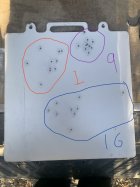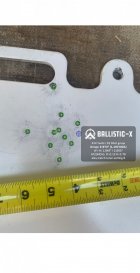The Kolbe article in the link is "The Vibrations of a Barrel Tuned for Positive Compensation". The information supports the idea that a rifle can be tuned to generate positive compensation at a given range.
In Kolbe's conclusions it's noted that
The proposition that positive compensation might be achieved by "tuning" a barrel, such that the muzzle angle is changing with time in a beneficial way at bullet launch, is thus a valid one.
The conclusions go on to note that testing showed the following:
The groups fired with the tuned barrel were small and round, showing no sign of vertical dispersion, so demonstrating that positive compensation had been achieved.
The measurement of barrel vibrations in the way demonstrated will be a very quick and positive method of tuning a rifle, requiring very few shots and very little time. Moreover, there is no ambiguity or uncertainty about the result. When the barrel is tuned for complete positive compensation, no further improvement is possible.
This illustration from the Kolbe article shows what positive compensation achieves (with SLOW and FAST referring to MVs of different rounds going to the same POI).

Below is a general question for all readers.
If positive compensation explains how a tuner works, can a tuner that's set at one distance, say 50 yards, continue to generate PC at further distances? In other words, if a tuner causes rounds of different MVs to have a very similar POI at one distance, is it possible for it to cause those same rounds to have a very similar POI at all other distances --
e.g. 75 or 100 or 150 or 200 yards?

















